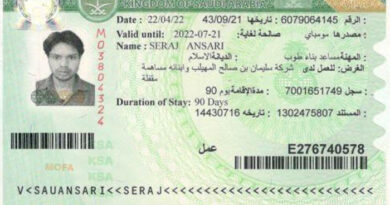Do you know to choose your Canada NOC TEER Code?
Most immigration candidates opt for an online CRS Calculator to check eligibility for Canada PR Visa. The new NOC 2021 has now been adopted by Immigration, Refugees, and Citizenship Canada with effect from 16th November 2022. Among the various changes implemented by the NOC 2021, new TEER categories have been launched replacing skill types.
All fresh Canada immigration applications submitted after 16th November have to use the accurate NOC 2021. Selecting the correct NOC code is highly essential for the success of your application. Your application can be rejected if you choose a NOC code that does not correspond to your work experience. It is your responsibility to ensure that you select the accurate NOC code and have the documents for upholding the code and work experience.
Your real job title is not crucial for the determination of your NOC code when it comes to your Canada immigration application. On the other hand, your work experience must correspond to the lead statement for the NOC code. You must also have performed a majority of the specified roles and responsibilities.
Thus, your work experience can be included in multiple NOC codes. Similarly, your formal job title can correspond to a NOC code that actually does not correspond to your experience.
NOC 2021 categorizes occupations by offering them a TEER – a Training, Education, Experience, and Responsibilities stream. 6 diverse categories are included in TEER that range from TEER 5 TO TEER 0. Your TEER category is represented by the second digit in your NOC code.
The categorization of NOC codes is as follows:
· First Digit – denotes the extensive occupational group
· Second Digit – denotes the TEER stream
· First 2 Digits – denote the chief group
· First 3 Digits – denote the sub-major class
· First 4 Digits – denote the minor group
· All 5 Digits – denote the occupation or unit group itself
NOC 2021 TEERs
TEER 0
· Occupations in Management
TEER 1
· Completing a degree at a University – Doctorate, Master’s, or Bachelor’; or
· Many years of experience in a particular occupation from a TEER 2 category (if applicable)
TEER 2
· Completing an education program at a Post-secondary level of 2 to 3 years in a community technology institute, college, or CEGEP; or
· Completing an apprenticeship program of training of 2 to 5 years; or
· Occupations having significant safety or supervisory (firefighters and police officers) responsibilities; or
· Many years of experience in a particular occupation from a TEER 3 category (if applicable)
TEER 3
· Completing an education program at a Post-secondary level of 2 years or less in a community technology institute, college, or CEGEP; or
· Completing an apprenticeship program of training of fewer than 2 years; or
· 6 months plus specific work experience, training course, or on-job-training along with education at the secondary level; or
· Many years of experience in a particular occupation from a TEER 4 category (if applicable)
TEER 4
· Completing Secondary school; or
· 6 months plus on-job-training along with education at secondary level; or
· Many years of experience in a particular occupation from a TEER 5 category (if applicable)
TEER 5
· Demonstrating short work and formal education not required
Low-Skilled and High-Skilled Work
Occupations classified as TEER level 3, 2, 1, or 0 are regarded as high-skilled work for immigration purposes. Occupations classified as TEER level 5 or 4 are regarded as low-skilled work.
The easiest way to confirm the classification of your occupation is to confirm on the website of Employment and Social Development Canada.
Minor and Major Groups
At times, immigration program guidelines can have reference to NOC Minor or Major Groups.
Major Groups denote the first 2 digits of the NOC code together. For instance, 31 Major Group denotes the majority of the occupations in the Healthcare sector (3 Skill Type). These normally need education at University Level (A Skill Level). All these occupations will be allocated a code in NOC starting with number 31. It includes 3131 – Pharmacists, 3113 – Dentists, etc.
Minor Group denotes the first 3 digits of the NOC code. This groups together identical occupations in a specific major group.
For instance, 4112 – Lawyers and 4111- Judges are under Minor Group 411. 4153 – Family Counselors and 4152- Social Workers are under Minor Group 415. Observe that the first 2 digits of every Minor Group denote the Major Group to which they belong here Major Group 41.
You can identify your NOC code by looking in the NOC Matrix either by keywords denoting your job title or by your industry. You must ensure to confirm that the lead statement corresponds to your job description. Also, you must perform most of the roles and responsibilities specified in your NOC Code.
To know your score for Canada PR Visa under CRS Calculator or to check eligibility for Canada PR Visa, contact Nationwide Visas.



